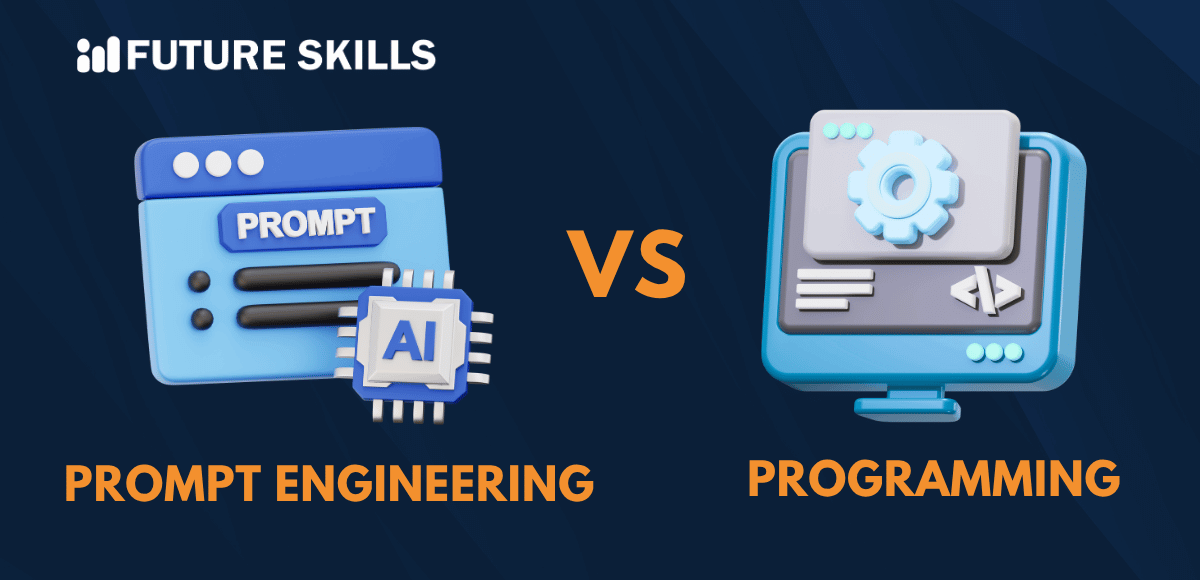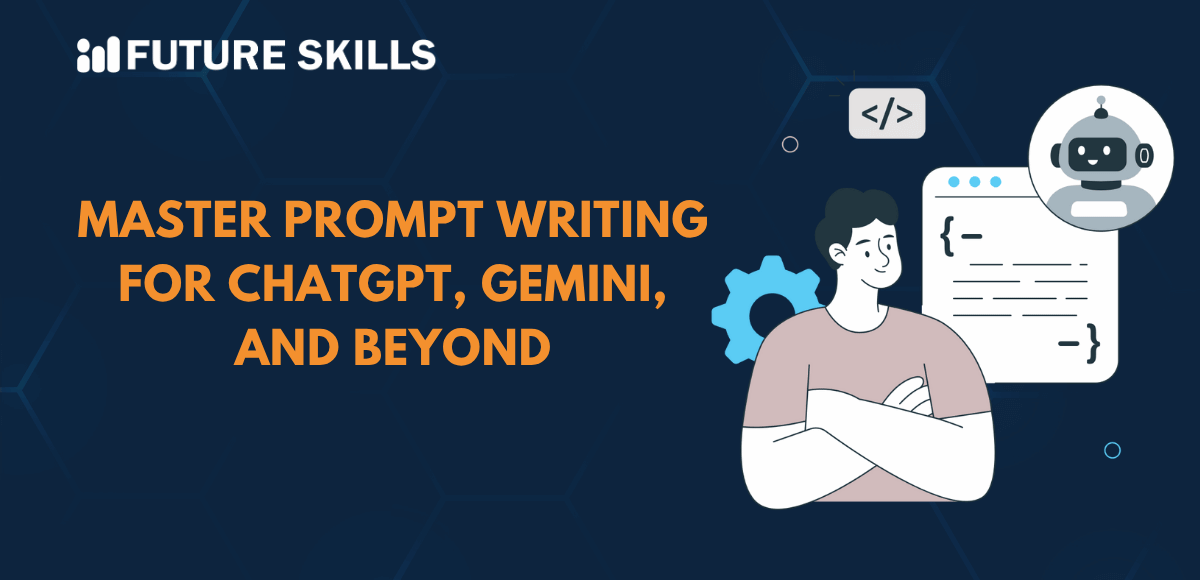Meta is one of the biggest competitors in the domain of LLMs and AI, and it has contributed to innovation alongside other notable players, such as Google and Microsoft. Meta announced the launch of Llama 3 on April 18, 2024, as the next addition to its open-access Llama family. The Llama 3 brings four new Llama models that utilize the Llama 2 architecture, which you can access in two sizes, such as 8 billion and 70 billion parameters.
Each variant has a base version and instruct-tuned versions. You can run the variants on different types of hardware with a context length measuring 8k tokens. The four different versions of the Llama model include Llama-3-8b, Llama-3-8b-instruct, Llama-3-70b, and Llama-3-70b-instruct. Another interesting addition to the Llama 3 family is Llama Guard 2, which has been developed to serve production use cases. Let us learn more about the fundamentals of Llama 3.
Learn the best techniques to interact with LLMs with our comprehensive Certified Prompt Engineering Expert (CPEE)™ Certification and become a certified prompt engineer.
What is Llama 3?
Llama 3 is the latest variant in the Llama language model family by Meta. It is a popular text-generation AI with a broad range of features. The popularity of Llama 2 is a clear indication of how Llama Meta AI interplay has transformed LLMs. As a matter of fact, Llama 2 was one of the most popular and comprehensive LLMs last year. However, the scale of improvements by competitors such as OpenAI GPT-4 and Claude 3 by Anthropic has pushed Llama 2 out of the competition. On the contrary, Llama 3 aims to address such limitations with its unique capabilities.
The working of Llama 3 is almost the same as that of OpenAI GPT and Claude models by Anthropic. You can write a prompt in text, and the LLM will generate a response for you. The new models also offer the assurance of better performance with improved logical reasoning and contextual understanding. Interestingly, the new models in the Llama family help in powering Meta AI smart assistants, which you can find on Instagram, Facebook, WhatsApp, and Messenger.
You can find answers to questions like “Will Llama 3 be open-source?” from the fact that Llama 3 works with open weights. The ‘open weights’ model in Llama 3 indicates that the model is open source in nature and offers transparency into the approaches for making certain calculations. However, the datasets used for training Llama 3 are not publicly available as of now.
Here is an opportunity for you to learn how to develop prompts for Code Llama and build a promising career in coding.
What are the Objectives of Meta for Llama 3?
Another important aspect in guides on Llama 3 draws the limelight on potential goals envisioned by Meta for Llama 3. Meta has designed Llama 3 with the goal of developing the best open-source models that can compete with the most popular proprietary models available in the market. Another important highlight for a Llama 3 guide points towards the need for addressing developer feedback to improve usability of Llama 3. At the same time, Meta aims to push Llama 3 as a trusted tool for encouraging safe and responsible use of LLMs.
The Llama 3 family followed the open source principle of early release alongside enabling the community to access the models in development stage. The new text-based models in Llama 3 aim at achieving multimodal and multilingual capabilities. In addition, Llama 3 also has a longer context window, and it continues to make improvements in overall performance on core LLM capabilities such as coding and reasoning.
What is New in Llama 3?
The roadmap for Llama Meta AI growth suggests that Llama 3 has a bright future with prospects for advanced capabilities. However, it is important to pay attention to different ways in which Llama 3 can compete against other top language models in the market now. You can access Llama 3 in two different sizes: a model with 8 billion parameters and a model with 70 billion parameters.
More parameters indicate that the model can generate better output, albeit with more costs and slower speed. Interestingly, the 70 billion parameter model is comparable to different competitor models. It is also important to note that Meta has been working on a larger model that would feature 400 billion parameters.
Another distinct highlight of Llama 3 is the extended context window. The context window represents the amount of text that a language model can process at once. The best feature of Llama 3 model family is the extension of context window to 8192 tokens. On top of it, a token represents a word or punctuation, as some words can be divided into different tokens. For example, four tokens would make up three words in English. Therefore, the new context window for Llama 3 ranges up to 15 pages of text. However, it falls behind Anthropic Claude 3 models that can work with a token window with 200,000 tokens.
Working Mechanism of Llama 3
The announcement for introduction of Llama 3 by Meta draws attention to the unique functionalities of the language model. First of all, Llama models rely on a decoder-only transformer architecture similar to its predecessors alongside the GPT series. It is the most common type of architecture that powers models to generate text. With Llama 3, you would not find any radical changes in the training process or model structure. On the contrary, you would notice multiple optimizations related to the tradeoffs between quality speed of response and the pace of development.
It is important to note that Llama 3 uses a new tokenizer for conversion of text into tokens with better efficiency. The tokenizer also ensures that prompts and the related responses would reduce token consumption by 15%. As a result, Llama 3 can accommodate more text within the context window.
The answers to “Will Llama 3 be open-source?” would draw attention to the new attention mechanism used for the models. Llama 3 uses a new attention mechanism, grouped query attention or GQA, to achieve a better tradeoff between output quality and speed of generating output as compared to the previous mechanisms.
Another factor in the working mechanism of Llama 3 is the larger training dataset. Llama 3 uses a dataset that is seven times bigger for training than Llama 2, which uses four times the code. More code in the training datasets ensures that Llama 3 has better capabilities for code generation. It is also important to remember that the Llama 2 model helped in evaluating and classifying data before including them in Llama 3 training set. Furthermore, optimization of the post-training process helps in tuning the raw LLM to enhance its performance.
According to Meta, the working mechanism of Llama 3 revolves around the following pillars.
- Supervised fine-tuning helps in leveraging collections of prompts and high-quality answers to generate examples of good answers.
- Rejection sampling involves generation and ranking of different outputs to reject the worst ones.
- Llama 3 also leverages reinforcement learning techniques such as Direct Policy Optimization and Proximal Policy Optimization to encourage positive behavior from the model.
What are the Missing Elements in Llama 3?
The highlights in any Llama 3 guide would focus prominently on the new capabilities in the models. However, it is also important to find out what it does not offer in order to make a better comparison with other competitors. Here is an outline of the most prominent aspects that are not found in Llama 3 family.
-
Multimodal Capabilities
ChatGPT offers a blend of GPT-4 text AI and DALL-E 3 image AI, thereby showcasing multimodal capabilities. On the other hand, Meta has announced that it would make the Llama models multimodal in the future. As of now, multimodal capabilities are one of the prominent goals for the future of Llama 3.
-
Mixture of Experts in Architecture
The Mixture of Experts or MoE architecture involves creating an LLM with different smaller LLMs that specialize in niche tasks. Meta has not mentioned the MoE architecture anywhere on the Llama 3 GitHub repository.
-
Multilingual Capabilities
Llama 3 training dataset includes 95% of the text in English language. Therefore, the model is likely to perform poorly for prompts in other languages. However, Llama 3 roadmap for the future has mentioned the possibility of introducing a multilingual version of the language model.
If you want to know why ChatGPT is revolutionary and how it can boost your career to another level. Enroll in our Certified ChatGPT Professional (CCGP)™ course today!
How Can You Access Llama 3?
The Llama models are a powerful addition to the AI landscape with their diverse capabilities. You can use Llama 3 for content creation, chatbots, document summarization, education, and creation of product descriptions. Interestingly, you don’t have to visit different pages or platforms to access the functionalities of Llama 3. On the contrary, you can find Llama 3 for download on the official GitHub repository and its website.
The Llama Meta AI integration allows you to access Llama 3 directly through the Meta AI assistant on Facebook, Messenger, Instagram, and WhatsApp. In addition, Meta has promised that Llama 3 would offer integrations with Google Cloud, AWS, Microsoft Azure, Databricks, Hugging Face, IBM Watson X, Kaggle, Snowflake, and NVIDIA NIM.
Final Words
The success of OpenAI ChatGPT and Anthropic Claude 3 models, alongside the advancements made by Google with Gemini, encourages the development of new language models. A comprehensive Llama 3 guide can help you understand how it brings a difference to the domain of text generation AI.
The unique training dataset, extended context window, and four different variants of Llama 3 indicate how it can transform LLMs. On top of it, Llama 3 also includes open weights that make it cheaper to operate than other LLMs. Learn more about LLMs and the popular models that rule the AI landscape right now.






